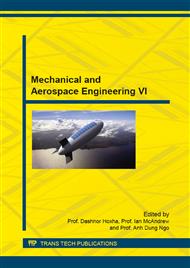p.3
p.8
p.15
p.20
p.25
p.30
p.36
p.41
Effect of Link Tolerance and Joint Clearance on End-Effector Positioning of the 3-PSP Manipulator Using Taguchi Method
Abstract:
The use of parallel manipulators in industrial is growing. Among key advantages of parallel manipulators versus their serial counterparts, is their improved end-effector positioning accuracy than open-loop mechanism. However, undesirable dimensional tolerance and joint clearance can decrease the positioning accuracy of the end-effector. In this article, Taguchi method is applied to a 3-PSP parallel manipulator to determine how dimensional tolerance and joint clearance affects the accuracy of its end effector. Because of random nature of dimensional tolerance, it is assumed that actual value of all kinematic parameters are normally distributed. Taguchi method is then used and effect of tolerance on accuracy for each of the manipulator kinematics parameters is obtained. Finally, a tolerance set resulting in best accuracy is predicted by the Taguchi method. This tolerance is verified with a new set of experiment.
Info:
Periodical:
Pages:
20-24
Citation:
Online since:
October 2015
Authors:
Keywords:
Price:
Сopyright:
© 2015 Trans Tech Publications Ltd. All Rights Reserved
Share:
Citation:


